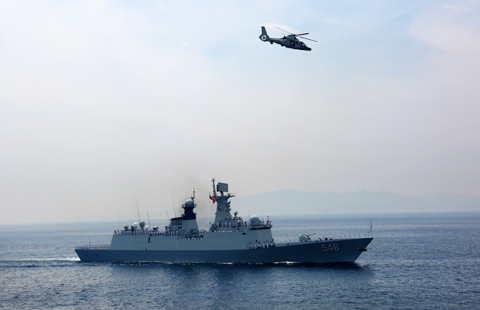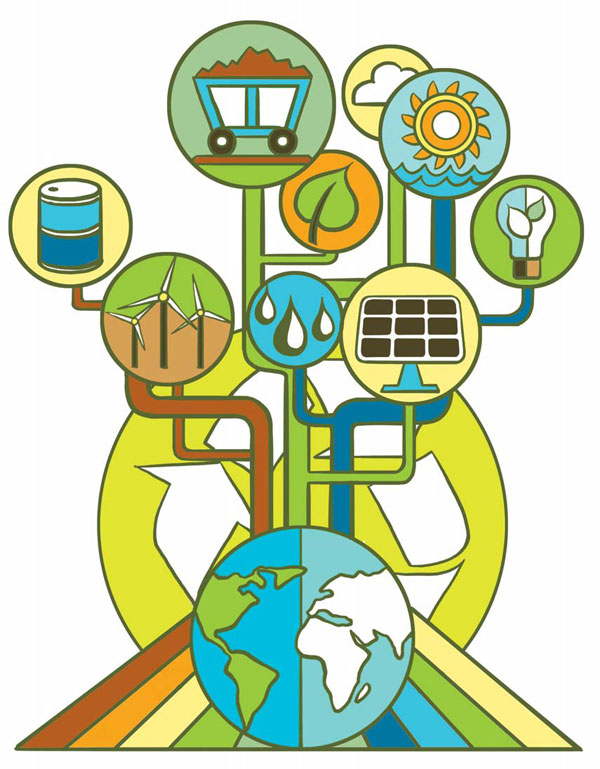Commodities story a mixed bag
Updated: 2015-01-02 08:52
By Michael Power(China Daily Europe)
|
|||||||||||
China's resource intensity of GDP growth is now slowing, and that drop in demand is showing
One of the most common observations made in the 2014 world of finance has been: "The Commodity Supercycle is over." And if there was any lingering doubt as to this, it was banished in the second half of 2014 as oil prices tumbled about 50 percent to the $60-a-barrel level.
As do readers of detective novels, the markets have asked "Whodunit?" And as with all good detective novels, the answer has not been glaringly obvious. There are a number of possible suspects. The likely truth is that multiple parties were involved, one group broadly associated with the view that demand growth has been insufficient, the other linked to the idea that supply has been too plentiful.
Between the yin of over-supply and yang of under-demand, the worlds of iron ore, coal and oil have in 2014 swung from being a seller's market to a buyer's market. Inventories have risen and resource prices have fallen, as have the share prices of companies that produce them. As a result, output growth has begun to be curtailed and new capital expenditure in resource projects has been postponed or even cancelled.
The "insufficient demand" reason for the fall of commodity prices centers on the idea that China's GDP growth is slowing, which of course it now is and, at some point, was always going to do. For the world's second-largest economy to continue growing at a real renminbi rate of 10 percent per annum was always going to be a tall order; indeed in nominal US dollar terms - which for now is the key metric of global demand - the past decade has seen China's GDP grow at a compound rate of over 17 percent per annum. However while China's GDP rate might be slowing, the incremental US dollar amount of growth per annum is still increasing. In 2009, China added $470 billion to its economy, the current equivalent of an Argentina; in 2014, it added more than twice this amount, over $1 trillion, more than an Indonesia.
Thus the idea of China "slowing" needs to be put into context, with particular note being made of the increased base effect. Of perhaps more relevance is the fact that China's resource intensity of GDP growth is now slowing. Another source of "insufficient demand" is the fact that the US' economic rebound has been lackluster while that of Europe and Japan has been almost nonexistent. Demand that commentators had hoped would come from the West has simply not materialized.
When the "insufficient demand" is juxtaposed with the "too plentiful supply", explaining what has happened to commodity prices becomes all the easier to do. Since 2000, resource producers have ramped up production: iron ore from Australia, coal from Indonesia, shale oil and gas from the United States, and copper from Zambia. And such is the long lead time for bringing new capacity on-stream - even in 2014 more new capacity still came on stream; indeed the same will also happen in 2015.
The weather of commodity markets is famed for being able to turn from sunshine to rain in the blink of an eye. Even a small level of under-supply can support sharply rising prices. By the same token, a small level of oversupply can cause the opposite: plunging prices.
In the wake of 2014's falling prices, resource companies have retreated into defensive mode. And they are not the only ones. Resource-rich countries have done the same; in many cases, their currencies - sometimes loosely described as representing a nation's "share price" - have tumbled to reflect this. Echoing the 40 percent fall in oil prices since July 2014, the Russian rouble has devalued by an equivalent amount.
Africa, whose economic prospects have dramatically improved in the past decade, now stands at a critical juncture. Will it follow down the commodity cycle so revealing to the world of finance that its 21st century renaissance is little more than a geared play on commodities? Or will it prove that as a continent it is now made of sterner stuff and that as such it will not be swayed from the new and more positive path that it has been travelling upon since 2000?
The likely answer to this is that parts of Africa have started to graduate to a more advanced economic state while others have not changed their essential character and so will still be buffeted by the strong winds blowing as a result of the downturn in the commodity cycle.
And just as not all African countries are facing the same prospects, so too not all commodities have suffered downturns. Coffee and cocoa - which are important exports for the nations of East and West Africa - have performed strongly in the past 18 months. Indeed, there is no single generalization that can tie the fate of commodities to the economic fate of Africa. For Africa's many net oil importers, and oil can make up almost half of some countries import bill, a 40 percent fall in oil prices is far more a blessing that a curse. Of course, the opposite will be true for Africa's few net oil exporters led by OPEC members Nigeria, Libya, Angola and Algeria.
To get a proper sense of what the economic outlook for Africa will be for 2015, one has to start with a country-by-country analysis, and then recognize that some countries are so economically influential within their African neighborhoods that their improving or deteriorating health can have wider regional implications: Nigeria's dimming prospects for 2015 are, for instance, weighing on West Africa's economic fortunes.
Even before the end of 2014, the fallout of lower oil prices has taken its toll on Africa's leading oil and gas exporters, most notably Nigeria where the Nigerian naira is 13 percent off its year highs and even Angola where the normally stable Angolan kwanza has lost 4 percent. As always, the health of gas-exporting Algeria is less easy to discern; the silver lining to its otherwise darkening prospects is that Europe might be starting to prefer its gas to that of Russia. Libya's prospects are probably clouded as much by intermittent supply as they are by lower prices. To a lesser degree, Cote d'Ivoire, Ghana, Gabon, Cameroon, Sudan and Uganda will earn less from oil than they did in recent years. Elsewhere in the energy complex, lower coal prices will have negatively affected South Africa.
Lower prices in the metals - both precious and industrial - will have affected countries in mainly West, Central and Southern Africa. Copper is important to Zambia and the Democratic Republic of Congo; iron ore to South Africa and Sierra Leone; gold to South Africa, Tanzania and Ghana; platinum to South Africa and Zimbabwe.
But African importers of energy and even metals will benefit from lower prices. Here the most obvious winners are to be found in East Africa, especially Ethiopia, Rwanda, Burundi and Kenya, and even to some degree, Uganda, Tanzania and Mozambique. That they are leading exporters of the one commodity group whose prices are holding up and in some cases even firming, like coffee, tea, meat, fish, dairy produce, horticulture, means that not only will some African countries not hurt in 2015, they will also benefit from improving terms of trade. That this region just happens to be also the part of Africa that is on the cusp of industrialization, faces robust Asia across the Indian Ocean and is the world's leading region for Internet-based banking suggests that the ill wind that has blown in the commodities complex in 2014 will in fact blow East Africa much good in 2015.
The authors is global strategist for Investec Asset Management, based in Cape Town. The views do not necessarily reflect those of China Daily.
|
Song Chen / China Daily |
(China Daily European Weekly 01/02/2015 page12)
Today's Top News
Nurse becomes UK's first Ebola victim
Bad weather dampers AirAsia search
China's endeavors to boost world economy in 2014
Less curbs on banks' yuan trading
'Human error' at fault in disappearance of flight
US-listed Chinese shares poised for more gains in 2015
Experts recommend fighter plane for developing nations
US rejects China involvement in Sony cyberattack
Hot Topics
Lunar probe , China growth forecasts, Emission rules get tougher, China seen through 'colored lens', International board,
Editor's Picks

|

|

|

|

|

|






